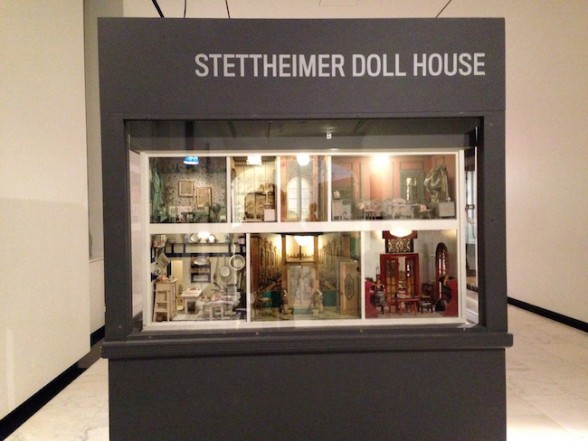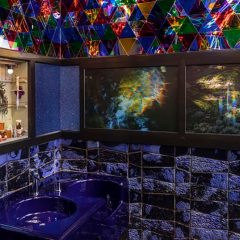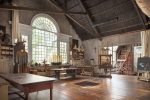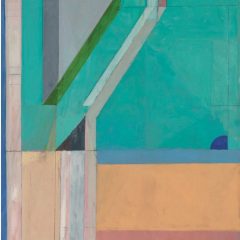Among my presents this season was an impromptu getaway to New York with Steve. The weather didn’t cooperate very much — it rained buckets and then turned cold. But we stayed indoors at the Met and the Museum of the City of New York and at night ate Indian food and heard some jazz at the Jazz Standard, featuring the Kenny White Quintet. No complaints!
Metropolitan Museum of Art
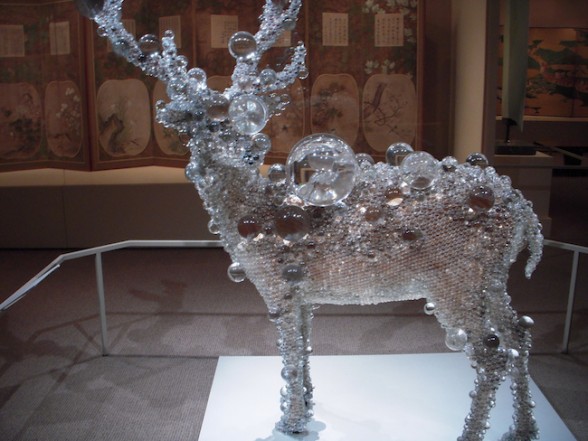
2011, Mixed media; taxidermied deer with artificial crystal glass. Not in the Ink Art show but a contemporary piece amidst some Centuries’ old work in the Asian section.
I consulted with Andrea before heading up there and she steered us to a couple very nice exhibits. Steve particularly enjoyed Ink Art: Past as Present in Contemporary China at the Met, a vast show (35 artists, 70 works) that spans the Asian galleries and focuses, per the title, on the printed image and especially the printed word.
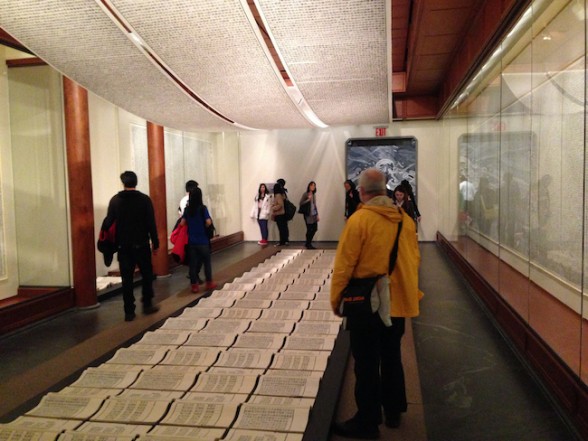
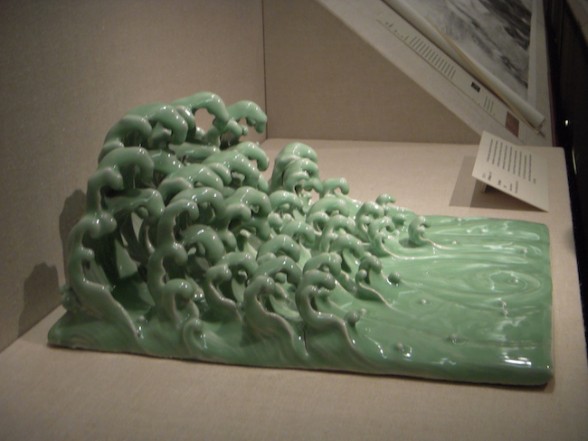
Steve was very engaged with the language pieces, and when I showed him the Ai Wei Wei ceramic Hokusai wave he didn’t seem impressed. Could have been my explanation, but the cryptic piece, made by porcelain craftsmen and glazed with traditional celedan glazes, stuck my funny bone. The transformation of the Japanese painted imagery into a Chinese table sculpture with celedan glaze is a great subsuming of a colonial power’s iconic imagery by an artist from a country once colonized.
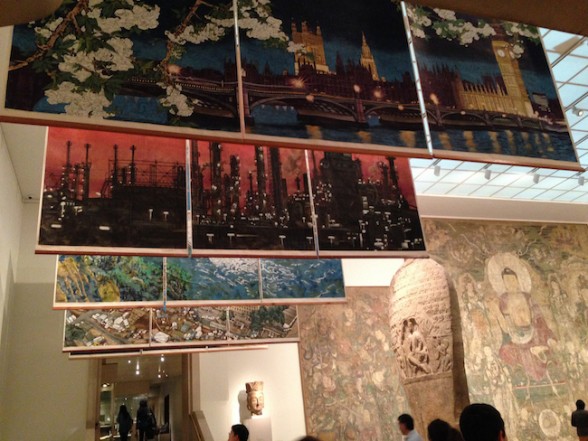
We almost missed the scrolls hanging from the ceiling in another part of the Asian collection. Yang Jiechang’s Crying Landscapes, shown at the 2003 Venice Bienale, hang like monumental warning flags foretelling strange and bad things to come. The works depict iconic Western and Eastern structures that symbolize industrial might and military power — the Houses of Parliament, the Pentagon, the Yangzi Gorges Dam. The birds-eye views of these structures is picture-postcard perfect, a sugar-coating of what really goes on in the realms of power where decisions are made about war, peace and the economic lives of citizens.
The guards are always helpful directing you to what you want to see, which is a great thing, since the building’s map reads like a giant Tetris game that made my eyes cross. So with help we found our way to the other side of the museum for the show, Interwoven Globe: The Worldwide Textile Trade, 1500-1800.
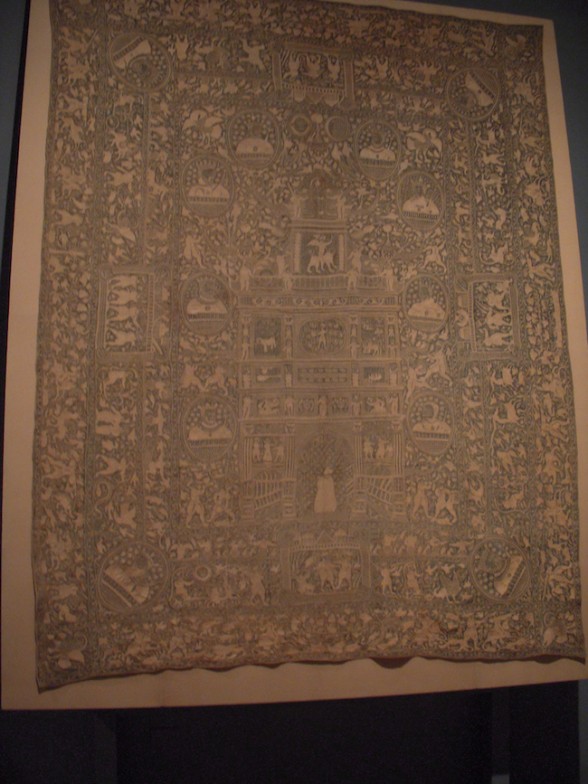
An exhibit with low light, beautiful textile pieces from all over the world, a great video map showing the routes of the colonial powers into the territories where all the trade happened, and dense wall text to explain the interplay from West to East and East to West as patterns, colors, motifs were adopted back and forth in colonial sites as well as in the colonizer’s countries.
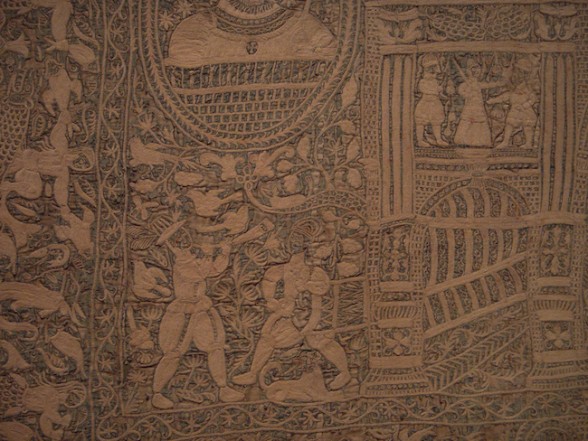
One example is a Bengali embroidered wall hanging with Portuguese imagery from the rule of the Spanish King Phillip III. Made for a Portuguese audience, the piece also has a Dutch coat of arms (the Dutch were under the rule of the Spanish then, too) and other designs by Bengalis for export to the Western market — Christian figures, mermaids and hunting scenes.
Interwoven Globe: The Worldwide Textile Trade, 1500-1800, closed Jan. 5, 2014.
Ink Art: Past as Present in Contemporary China, to April 6, 2014.
Museum of the City of New York
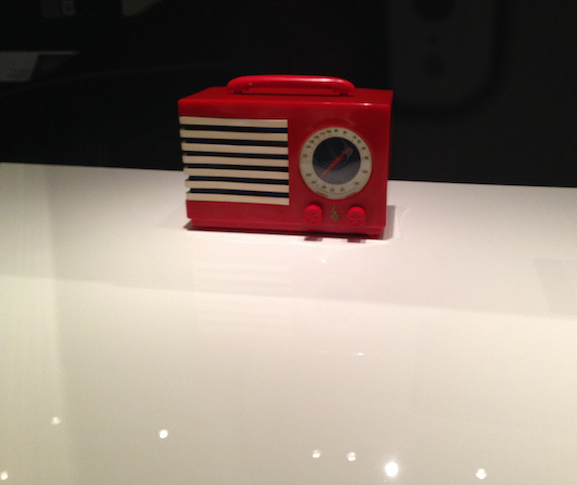
We went to see the Norman Bel Geddes show at the Museum of the City of New York, and found that pretty interesting — the streamlined designs and the sheer energy of the early 20th Century designer was great to be introduced to.
Bel Geddes was a restless, creative guy who was very instrumental in product design in the 1920s and 30s and designed the Futurama pavilion for General Motors for the 1939 World’s Fair in New York. He designed radios for Philco, Emerson and RCA. The Emerson Patriot Radio, from 1940, is a star of the show. He even designed his name. He was born Norman Melancton Geddes and when he married Helen Belle Schneider, he changed their names to Bel Geddes. Also, just in case you’r wondering, his daughter, Barbara Bel Geddes was an actress who played Midge in Vertigo and Miss Ellie on the TV show Dallas.
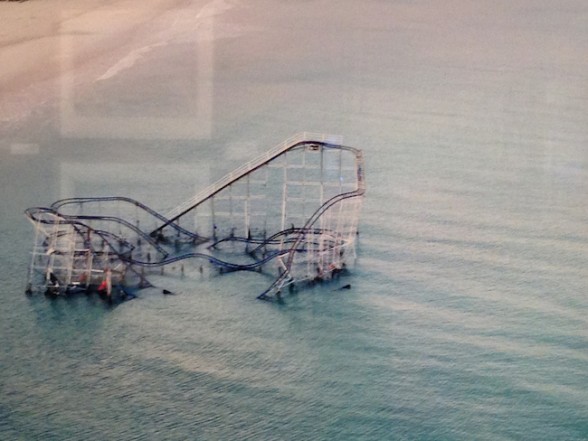
After Bel Geddes, we cruised through the Rising Waters show, which commemorates the devastation by Superstorm Sandy. It’s filled with heart-breaking photographs of the devastation. More than 900 artists submitted images although needless to say not all are shown.
The Stettheimer Doll House was a little extra surprise we found in the museum, a great miniature art work on its own. The wealthy and artistic family (including painter Florine) had a circle of friends that included many artists. And there is miniature art in the dollhouse made by artists who were friends of the family. I didn’t see it but apparently there is a miniature “Nude Descending a Staircase” by Marcel Duchamp. The house, which was worked on for 25 years, is 28 inches tall, 50 inches long, and 35 inches wide, a little gem. I wondered if this is where Florine got her whimsy?
Final thing we saw, the Activist New York exhibit, an ongoing exhibit at the museum, is disappointing. A crowded documentary exhibit jammed into a small space, it has information and pictures of notable historical activists (women’s suffrage, the Settlement House movement) and is also notable for its complete lack of coverage of the Occupy movement. We both shook our heads in disbelief.
Rising Waters, to March 2, 2014.
Norman Bel Geddes, to Feb. 10



